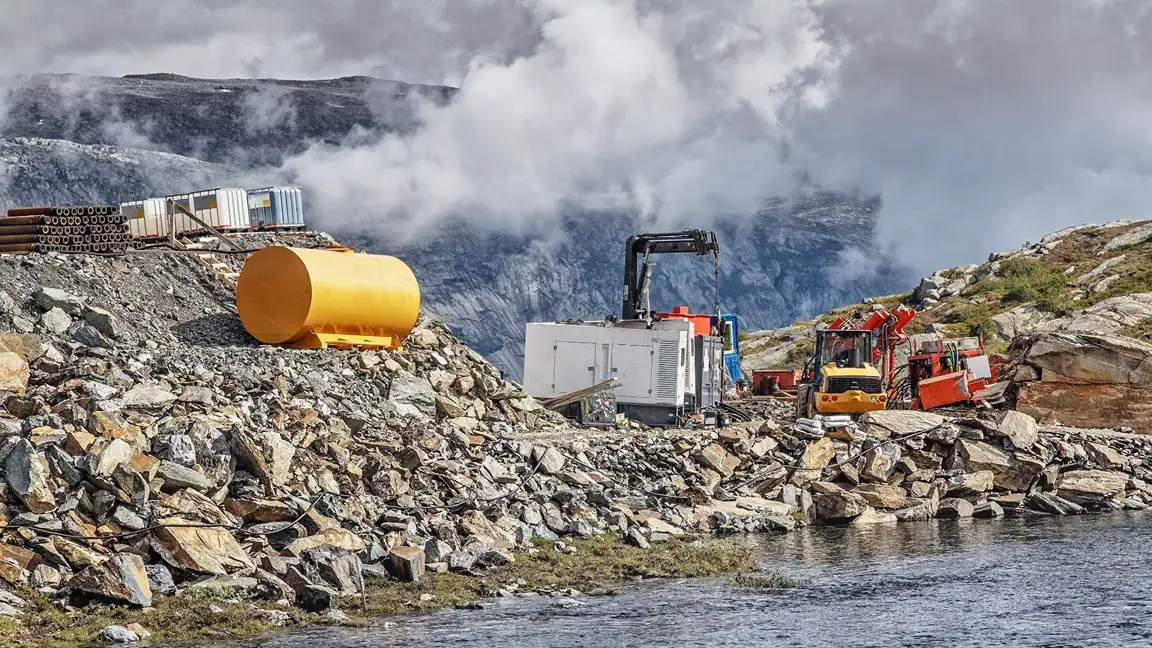- Introduction
- The Role of Sustainable Dredging in Environmental Protection
- HID Dredging’s Commitment to Sustainable Dredging
- Clean Energy Solutions in Sustainable Dredging
- Green Technologies and Eco-Friendly Practices in Dredging
- Modular and Low-Emission Dredging Solutions
- Smart Management and Sustainability in Dredging Projects
- Future Goals for Sustainable Dredging Solutions
- Conclusion
Introduction
As the global push for sustainability grows stronger, industries are being called upon to reduce their environmental impact. The dredging industry, essential for maintaining navigable waterways and protecting coastlines, is no exception. Sustainable dredging solutions have become crucial, with an increasing demand to minimize environmental harm while maintaining operational efficiency. In this article, we will explore how HID Dredging is leading the way in sustainable dredging, focusing on clean energy, green technologies, and eco-friendly practices that are reshaping the industry.
The Role of Sustainable Dredging in Environmental Protection
Dredging is a critical activity for maintaining navigable waterways, protecting coastal areas, and improving water quality. Whether for flood control, port expansion, or ecosystem restoration, dredging plays a significant role in the environment. However, traditional dredging methods can have adverse effects on aquatic ecosystems, including habitat disruption and high energy consumption.
Given the pressures of climate change and the need to protect natural resources, the focus on sustainable dredging has become more important than ever. Sustainable dredging solutions aim to reduce environmental impacts while ensuring that dredging activities continue to meet the demands of urbanization and climate resilience. HID Dredging is at the forefront of this transformation, developing innovative technologies to make dredging more environmentally friendly.
HID Dredging’s Commitment to Sustainable Dredging
HID Dredging has long recognized the importance of combining operational efficiency with environmental stewardship. The company’s dedication to sustainable dredging is evident in its ongoing efforts to develop cutting-edge technologies that minimize environmental harm. By embracing clean energy solutions, eco-friendly practices, and energy-efficient dredging equipment, HID is paving the way for a greener future in dredging.
Clean Energy Solutions in Sustainable Dredging
At the core of HID Dredging’s sustainable solutions is its focus on clean energy. The company has developed electric and hybrid dredgers that significantly reduce carbon emissions compared to traditional diesel-powered dredgers. These clean energy dredgers are capable of operating without the use of fossil fuels, making them a critical step toward achieving sustainable dredging goals.
By utilizing renewable energy sources and integrating hybrid systems, HID Dredging has been able to improve the efficiency of its operations while reducing the dredging industry’s carbon footprint. This shift to electric and hybrid technology represents a major milestone in sustainable dredging practices, helping companies meet the growing demand for eco-friendly solutions.
Green Technologies and Eco-Friendly Practices in Dredging
Beyond clean energy, HID Dredging is incorporating green technologies into its dredging solutions. One of the key innovations in this area is the use of eco-dredging techniques, which minimize the disruption of aquatic ecosystems during dredging operations. By carefully managing sediment extraction and minimizing the release of pollutants, HID’s eco-dredging methods ensure that dredging activities have a less harmful impact on aquatic life.
Additionally, HID Dredging is adopting intelligent dredging systems that optimize fuel consumption and reduce energy waste. Advanced dredge pumps and energy-efficient technologies contribute to lower emissions and less environmental damage, further enhancing the company’s commitment to sustainable dredging.
Modular and Low-Emission Dredging Solutions
HID Dredging is also advancing modular dredging solutions that support sustainable practices. Modular dredgers are flexible, transportable, and can be easily adapted to various operational environments. These systems are designed to reduce the cost and environmental impact of deploying dredging equipment to remote or challenging areas, contributing to the overall efficiency and sustainability of dredging operations.
Furthermore, HID is investing in low-emission dredging equipment that meets the strictest environmental standards. These low-emission dredgers are designed to produce fewer pollutants, operate more quietly, and reduce the impact on surrounding ecosystems, supporting the company’s goal of sustainable dredging practices.
Smart Management and Sustainability in Dredging Projects
HID Dredging is also advancing sustainability through smart management of dredging projects. By integrating data analytics and intelligent monitoring systems, the company optimizes dredging operations to reduce energy consumption, enhance efficiency, and ensure that projects are executed with minimal environmental impact. Remote monitoring systems allow for real-time tracking of dredger performance, ensuring that each operation adheres to sustainability targets.
The integration of AI and big data into dredging project management allows HID to improve operational processes, reduce waste, and achieve more sustainable dredging outcomes. These technologies are key to ensuring that sustainable dredging becomes the norm in the industry.
Future Goals for Sustainable Dredging Solutions
Looking ahead, HID Dredging is committed to further advancing its sustainable dredging solutions. The company’s 2025 goals include the development of next-generation electric and hybrid dredgers, improvements in energy efficiency, and innovations in eco-friendly dredging techniques. HID is also focusing on expanding the use of renewable energy in dredging operations to support a more sustainable future.
HID Dredging is also actively researching new methods for reusing dredged sediments in various industries, such as construction and agriculture, to minimize waste and support a circular economy. By continuing to invest in sustainable technologies, HID aims to help the dredging industry meet stricter environmental regulations and reduce its overall environmental footprint.
Conclusion
HID Dredging’s focus on sustainable dredging solutions is reshaping the future of the industry. Through the development of clean energy dredgers, eco-friendly technologies, and intelligent systems, HID is helping to create a greener, more efficient dredging industry. The company’s commitment to reducing environmental impact while improving operational efficiency positions it as a leader in sustainable dredging practices.
As the demand for environmentally responsible dredging continues to grow, HID Dredging’s efforts to innovate and integrate sustainability into its operations are setting a new standard for the industry. By prioritizing clean energy and green technologies, HID Dredging is ensuring that the dredging sector can meet the challenges of today while protecting the environment for future generations.
